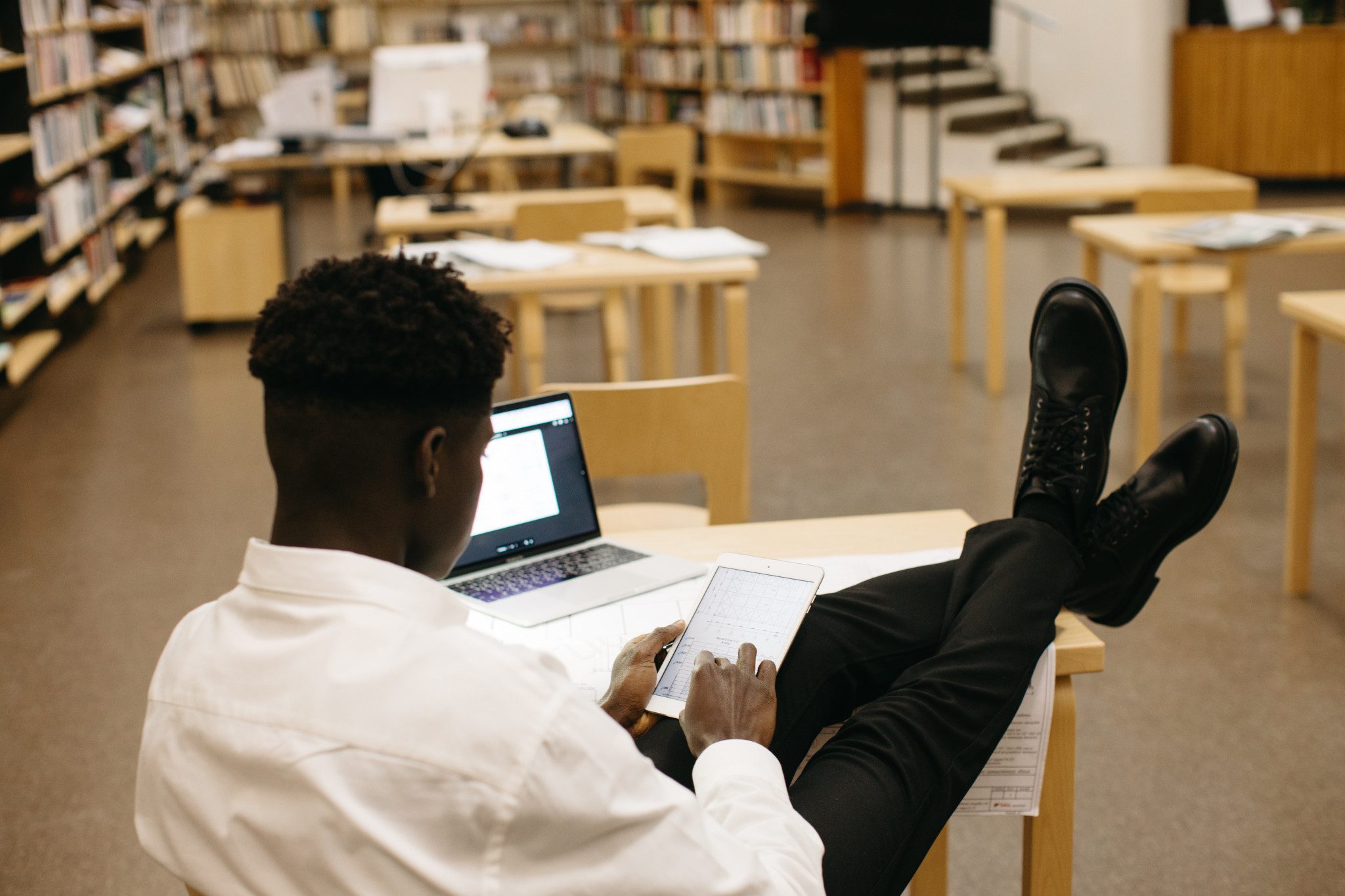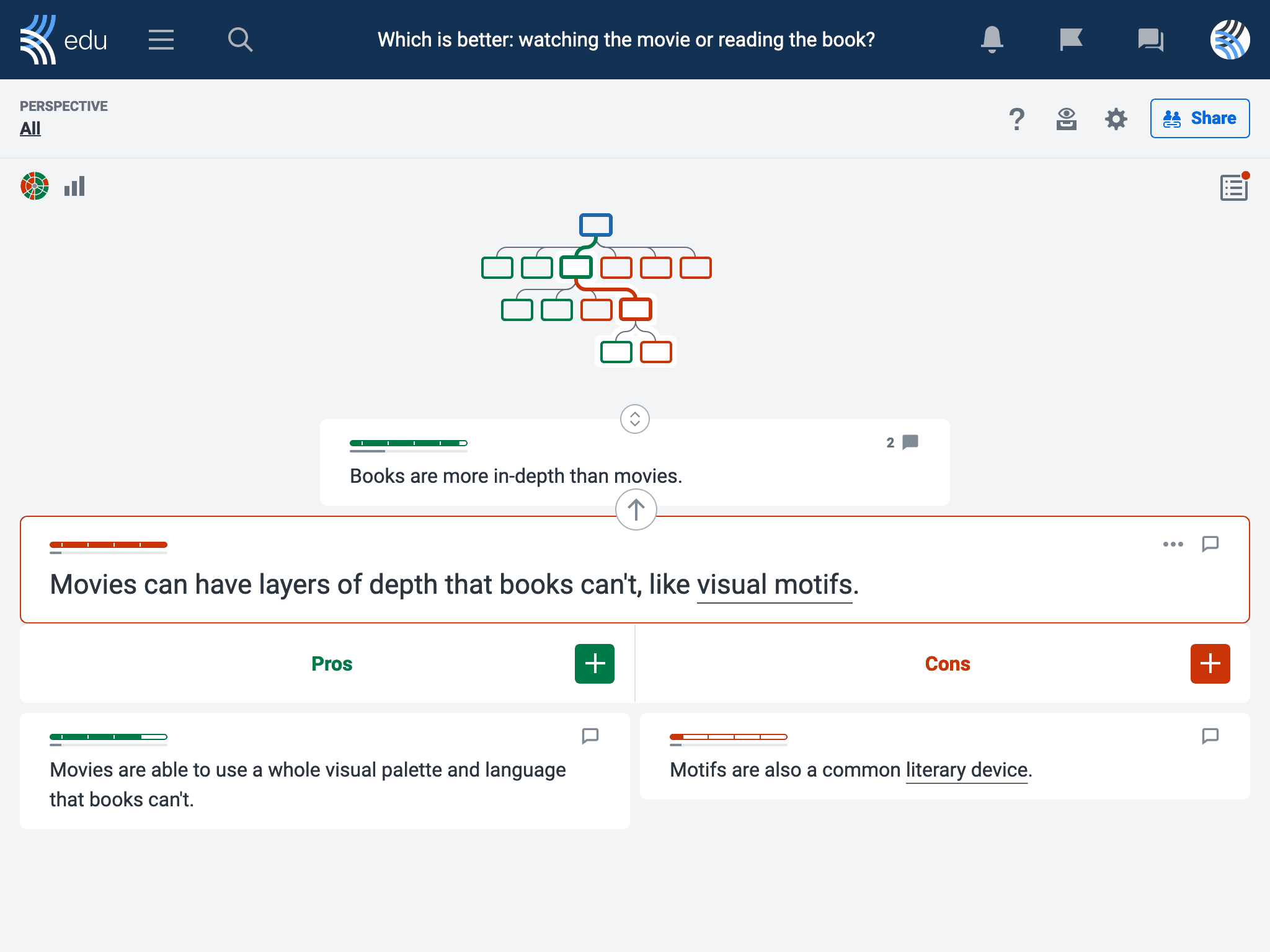“Debates is a sick way to teach grammar!” While we at Kialo Edu “totes” agree with this statement, grammatical accuracy along with a touch more formality could go a long way in aiding students’ communication skills!
So, alongside building students’ critical thinking, why not use debate like those on Kialo Edu to improve students’ grammatical knowledge?
Why is teaching and practicing grammar important for students?
Grammar is a set of rules dictating how a language works. A solid understanding of these rules can help students adjust their communication style, so they can “slay” in any situation. This means they’ll be comfortable communicating whether they’re at a college interview or socializing with peers!
Each language has its own rules, so sound grammatical knowledge is also essential for ESL students. It helps them to construct accurate sentences and communicate their meaning more precisely, avoiding awkward misunderstandings!
Activities to teach students grammar through class discussions
Students need opportunities to apply their grammatical knowledge in a range of contexts and for multiple purposes. Discussions and debates offer a meaningful way to do this, motivating students to construct convincing, grammatically accurate arguments. This type of active learning increases their engagement and improves their grammatical knowledge.
To get you started, we have selected some grammatical concepts that students can perfect by using one of our popular debate topics in a Kialo Edu discussion.
Students could apply their skills across the curriculum to discuss historical events such as World War II, analyze literary works like Lord of the Flies, or explore issues around the latest technology.
1. Use class discussions to practice formality in grammar through debate

Formality in language is a continuum with many different grammatical possibilities. Students should learn to match the level of formality with the context and purpose of communication.
In a class debate, using formal vocabulary and sentence structures gives students an air of authority. They sound knowledgeable, which makes their argument more convincing and helps them gain support from others.
A formal tone also enables students to show respect for others’ opinions. Saying “I respectfully disagree…” is less confrontational than “You trippin’!” Through debate, students will start to see the effect of their formal choices on others.
For maximum formality, explore the use of the subjunctive mood. Beyoncé’s “If I Were a Boy” is a perfect example of this in action! Students can use the subjunctive mood to express wishes, make proposals, or refer to hypothetical scenarios.
In a Kialo Edu discussion, students can use sentence starters such as “I propose that…” or “It has been suggested that…” to introduce arguments. And if it’s good enough for Queen Bey, then it’s certainly good enough for your students!
Hopefully, students will also connect what they’ve learned with their writing, meaning errors in formality become a thing of the past. And by practicing formality, students will not only be successful debaters, but they’ll also develop lifelong communication skills that will help them with all aspects of their lives.
2. Encourage students to practice vocabulary with synonym use in discussion
Maintaining listener interest is a key part of debating. This can be challenging as language use tends to become repetitive over time. Thus, encourage students to vary their language with synonyms. This will lead to more precise communication and more meaningful claims.
Increasing students’ vocabulary can also help them construct thoughts and respond to others more quickly. Moreover, widening students’ vocabulary has the added benefit of closing the “Word Gap” which can increase academic achievement in the long term.
When students make claims in a Kialo Edu discussion, provide them with a list of high-frequency topic words for the debate. Challenge students to use each word only once. They can expand their vocabulary by using a thesaurus to find alternative terms for their claims.
As a follow-up, ask students to write an essay based on their claims. This will allow them to apply their new vocabulary in a written format, embedding it in their long-term memory.
3. Help students master grammar cohesion and conjunctions through discussions
Sometimes, trying to follow the thread of a student’s essay is akin to being lost in a maze. The same can apply to debates when students make seemingly unconnected claims. Even if a student has mastered formality and synonyms, their efforts will be wasted if they cannot create a cohesive argument.
Kialo Edu’s argument-mapping structure supports students in developing cohesive lines of argumentation. It also gives educators an opportunity to teach students to use conjunctions to clarify the relationship between claims.

To practice this, students should write claims that build on those above in the argument map. Here, educators can encourage students to use conjunctions such as furthermore or moreover to reinforce ideas.
Students also need to consider both sides of the argument through writing pros and cons. To rebut an idea, students can use oppositional conjunctions, such as however and in contrast.
In both cases, cause and effect conjunctions, such as therefore and consequently, are also useful to justify claims.
If students can transfer this knowledge to their essay writing, their ideas will be more coherent and clear. You’ll finally be able to escape that maze!
4. Have younger students practice grammar with using modal verbs in debate
“Can I borrow a pen?”
“You can borrow a pen, but whether you may is another question.”
We hope you are not that teacher! But, this does demonstrate the importance of using modal verbs correctly. Debates are the perfect opportunity to practice this with younger pupils!
When writing claims on Kialo Edu, challenge students to use a modal verb in each claim. Students can choose between expressing possibility or certainty using modal verbs such as might, could, or will. Then, ask them to compare claims, exploring how expressing a different degree of possibility or certainty affects their message or refines their meaning.
They may identify that choosing modal verbs for possibility opens up the debate, creating more opportunities for opposing claims. Or, they may identify that expressing certainty can create conflict, implying that there are no other possibilities. Through debate, younger students will develop confidence with these nuances of language.
With practice, students will become confident communicators as they apply their grammatical knowledge in debates. So, there will be less “Debates is a sick way to teach grammar!” and more “One cannot doubt the efficacy of debate in improving grammatical knowledge.” You may even earn “props” from your colleagues as students apply their improved communication skills across the curriculum!
We would love to hear how you have harnessed the power of debate in your classroom — we promise not to check your grammar! Contact us at feedback@kialo-edu.com, or via social media. Now, “We’re outta here! Catch ya later!” Or, more formally, “Farewell; until the next time.”

